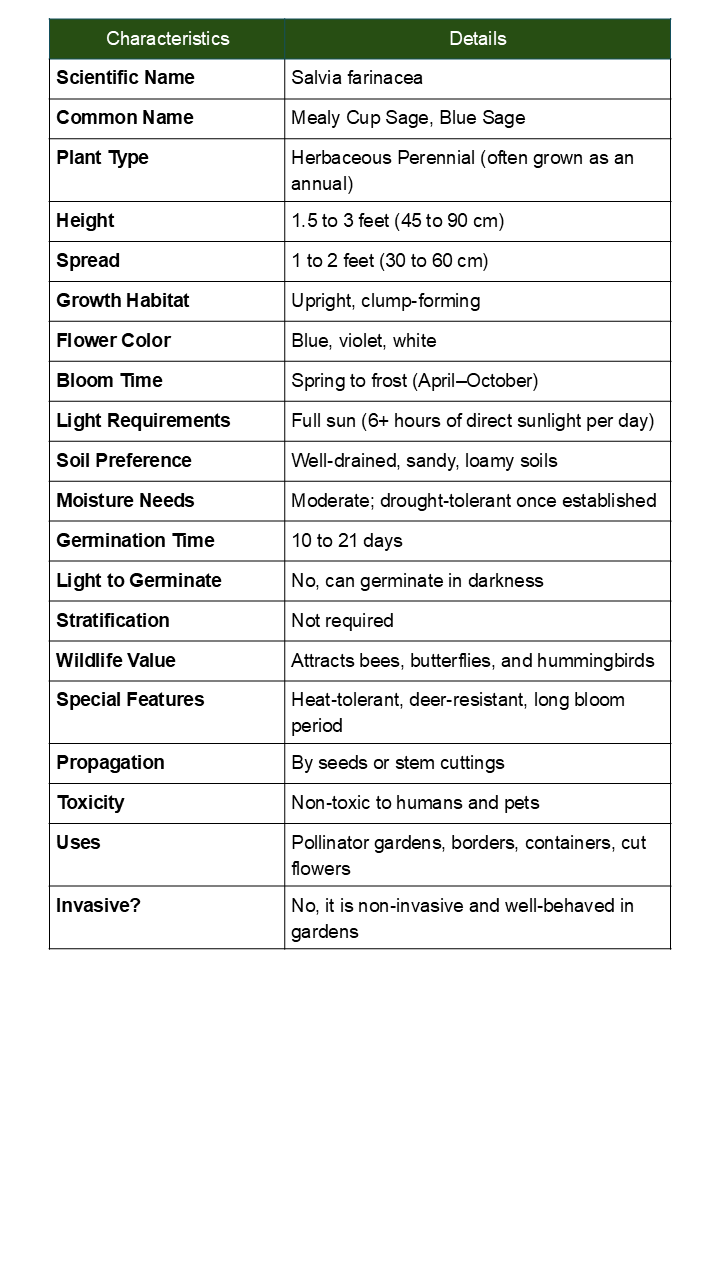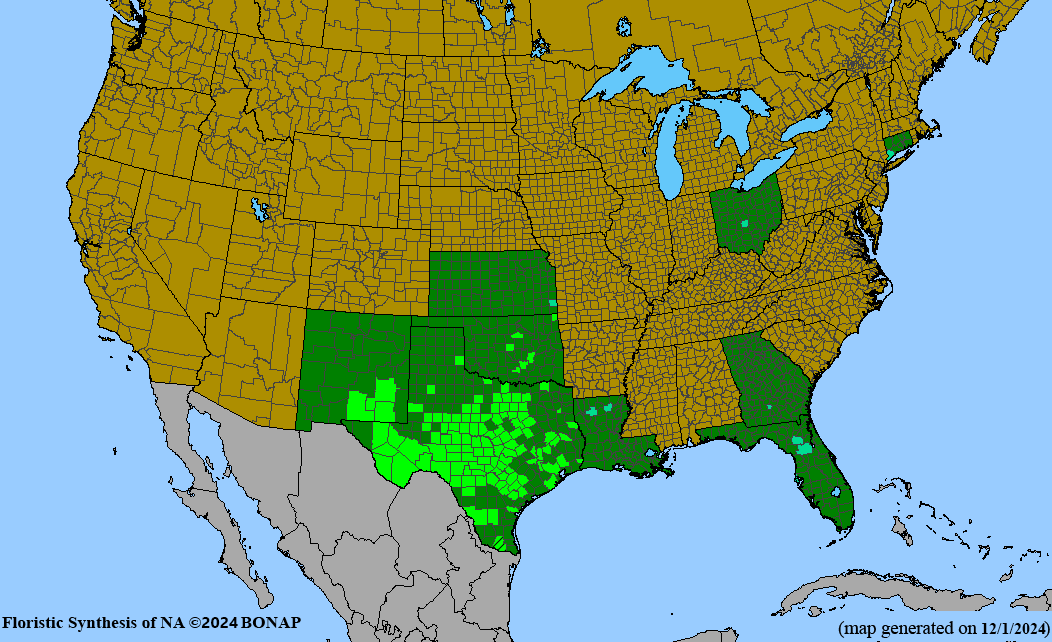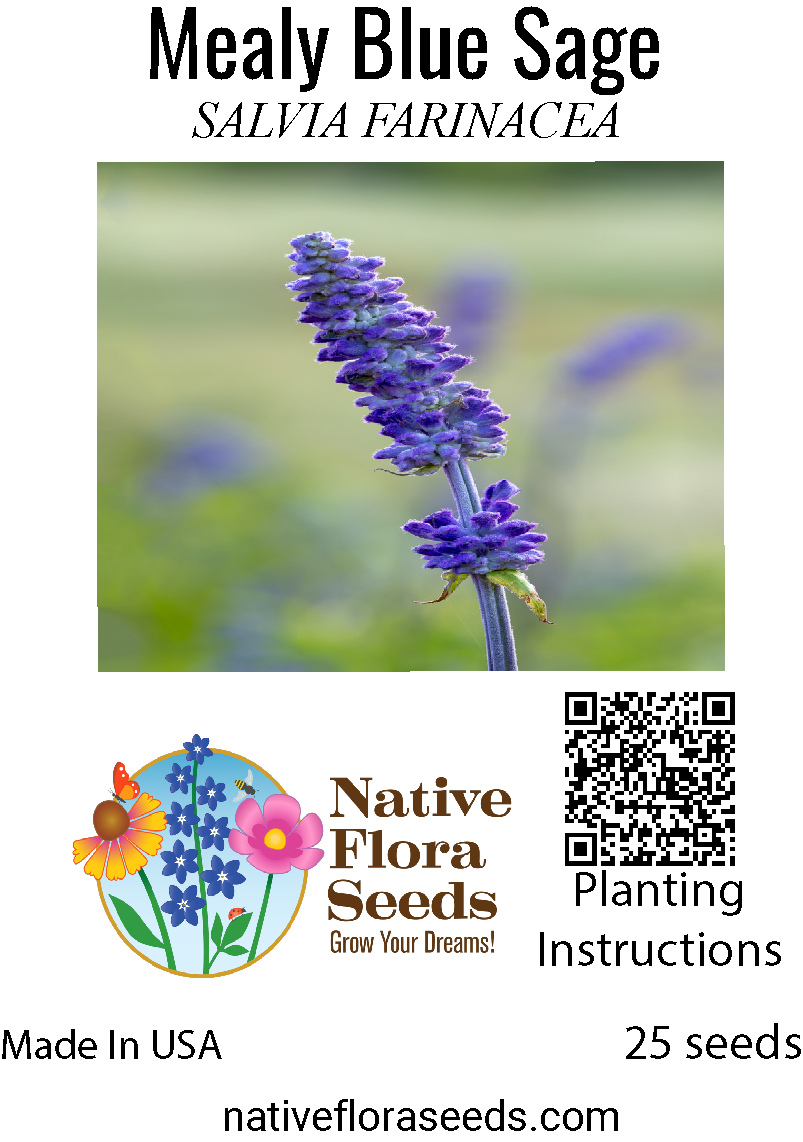Mealy Blue Sage Seeds - Premium Salvia farinacea for Hummingbird Gardens
Regular price$4.00
/
Tax included.
Elegant Native Beauty - Mealy Blue Sage
Mealy Blue Sage (Salvia farinacea) is a stunning native perennial that produces elegant spikes of deep blue-purple flowers from spring through fall. This drought-tolerant beauty is beloved by hummingbirds and butterflies, making it an essential addition to any pollinator garden or xeriscape landscape.
🌸 Key Benefits:
- Hummingbird Magnet: Tubular flowers are perfectly designed for hummingbird feeding
- Extended Bloom Season: Continuous flowers from spring through first frost
- Heat & Drought Champion: Thrives in hot, dry conditions with minimal water
- Pollinator Paradise: Attracts butterflies, bees, and beneficial insects
- Cut Flower Excellence: Long-lasting spikes perfect for fresh and dried arrangements
- Deer Resistant: Natural compounds deter browsing animals
🌱 Plant Characteristics:
- Height: 2-3 feet tall, 1-2 feet wide
- Bloom Time: Spring through fall
- Flowers: Dense spikes of deep blue-purple tubular blooms
- Foliage: Silvery-green, lance-shaped leaves with fuzzy texture
- Light: Full sun (essential for best blooming)
- Soil: Well-draining, sandy or rocky soils preferred
- Zones: 7-10 (annual in cooler zones)
🎯 Perfect For:
- Hummingbird and butterfly gardens
- Xeriscaping and drought-tolerant landscapes
- Cut flower and cottage gardens
- Mass plantings for dramatic blue displays
- Native plant and wildlife gardens
- Hot, challenging garden sites
Growing Tips: Direct sow in spring after last frost or start indoors 6-8 weeks early. Seeds germinate easily in warm soil. Plants prefer full sun and excellent drainage for best performance.
Each packet contains fresh, viable seeds with detailed growing instructions. Sustainably sourced from native Texas populations.
FREE SHIPPING WITHIN USA



